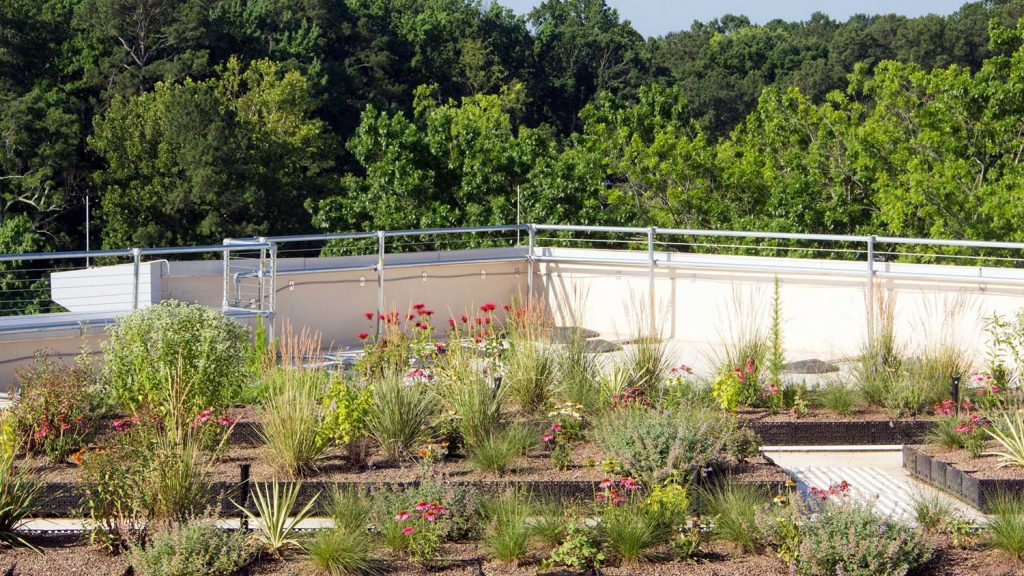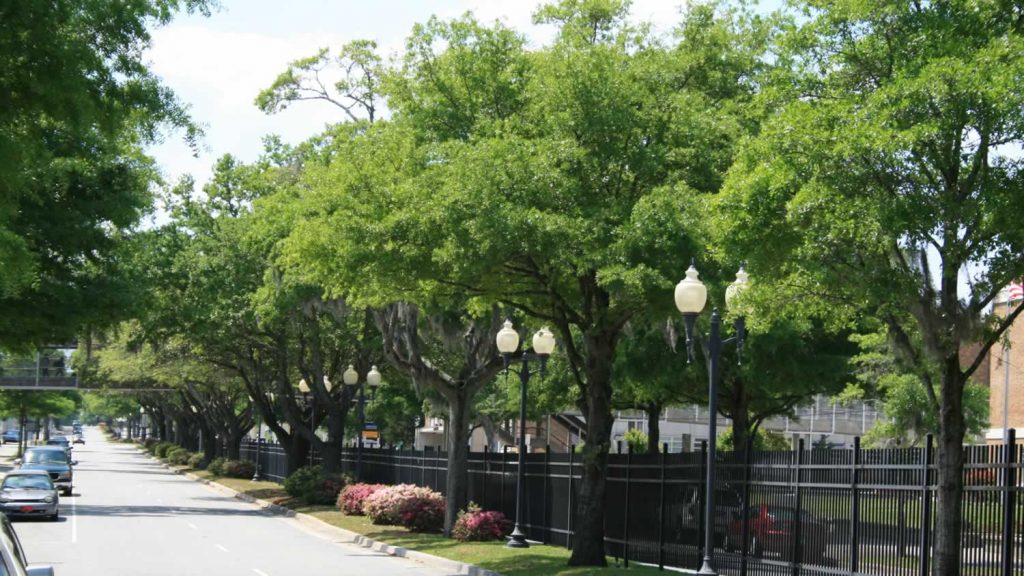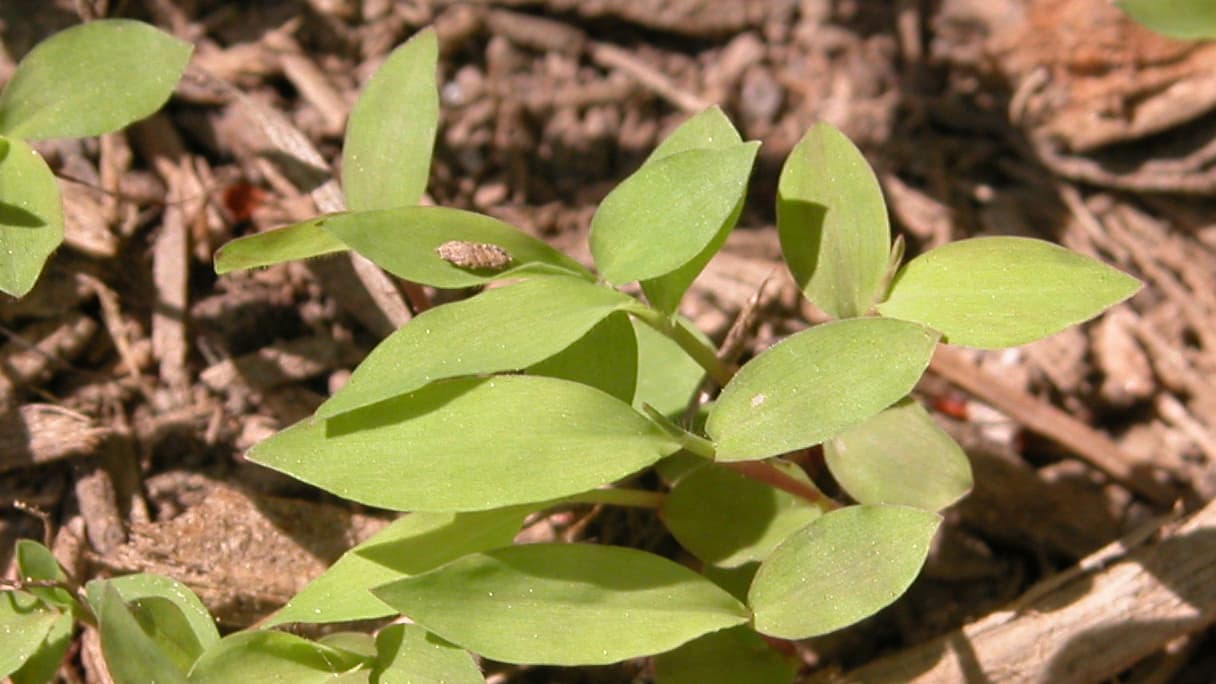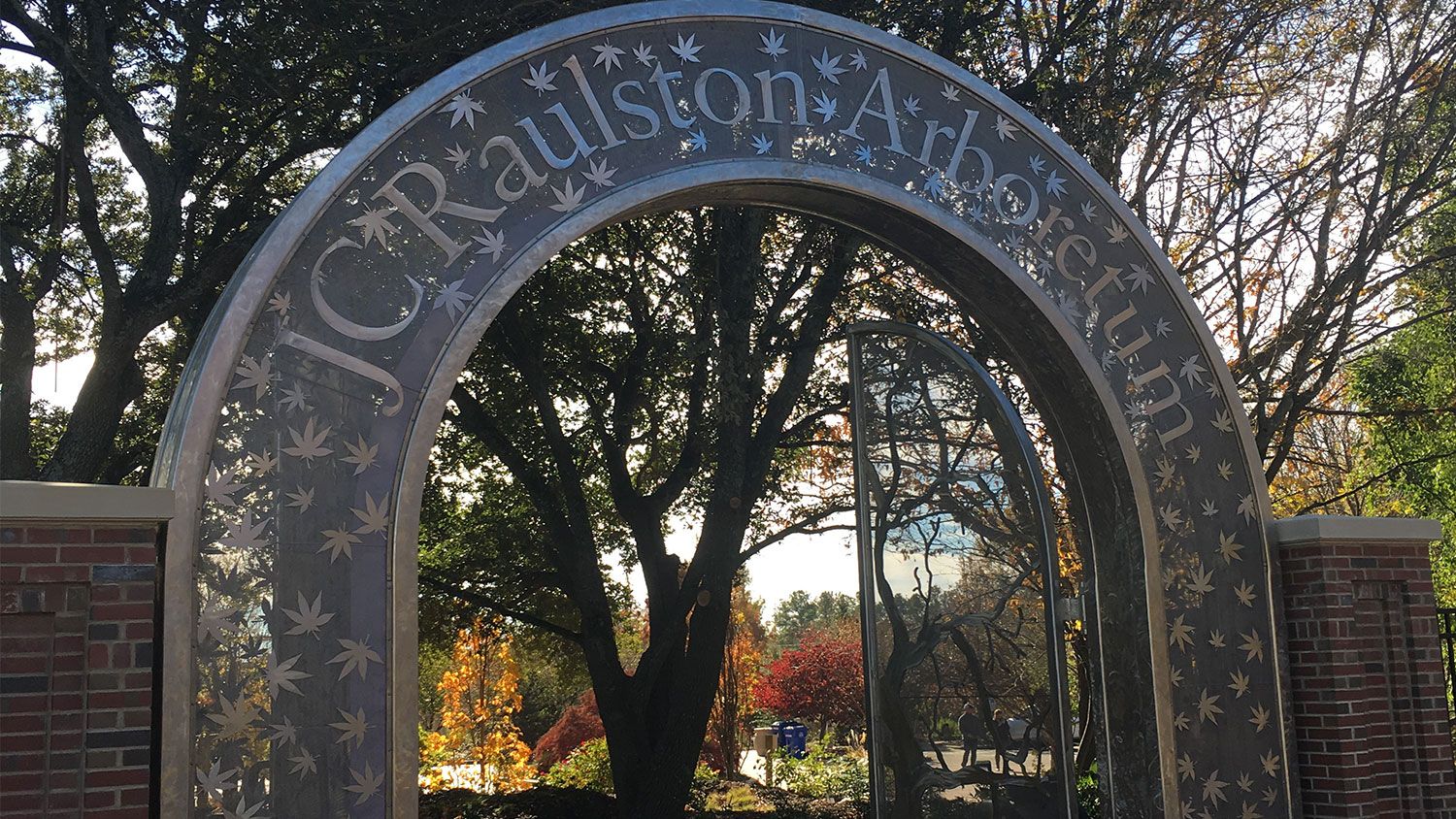Landscapes, Gardens, and Urban Horticulture
Urban horticulture is broad research, extension, and teaching area in the Department of Horticultural Science. As it is broad, the focus encompasses a wide array of topics from landscape design, plant production, selection, installation, and maintenance, to the production of food on the local level. A diverse group of faculty work under this umbrella focusing on gardening, landscape design, arboriculture, and green infrastructure. Additionally, because this is such a diverse area, faculty often partner with researchers and extension faculty in other, related departments.
Talley Rooftop Pollinator Living Laboratory

Landscape Design
We go to great lengths to find real-world, meaningful design project for our students that require them to look to existing research, develop design guidelines

Sustainable Landscapes
Huang, X. and J.T. Sherk. 2014. Evaluation and comparison of sustainability performance, visual preference, and area use in residential landscapes, HortTechnology 24(3):318–324.
Community Gardens
Tilley–Asher C., J.T. Sherk, L. K. Bradley, J.M. Lelekacs, 2014. Design matters in community gardens, J. of Extension. 52(1):1TOT9.
Sherk, J.T. 2013. A service learning approach to community engagement in a study abroad design course in Córdoba, Mexico. NACTA Journal 57: 8–14 (special global edition).
Landscape Design Conventions
Sherk, J. T. 2010. The Parque Del Este: a modernist landscape in Latin America. In: Landscape Legacy: Landscape Architecture and Planning Between Art and Science, Maastricht Netherlands. Council of Educators of Landscape Architecture pp.146–148.
Rooftop Gardens
Archer, M. Urban Agriculture in the Sky: Productive Rooftop Garden Benefits, Design Guidelines, and Potential for Development in Raleigh, North Carolina. Unpublished MHS Project (2012) that applied previous research to a design for a rooftop garden on Fayetteville Street in downtown. Mary’s current work interests can be found here.
Therapeutic Horticulture for Veterans
Borsay, A. Restorative Landscape Design for Soldiers in Transition. Unpublished MHS Project (2015) that explored existing research on therapeutic gardens, investigated an appropriate site and needs/wants of patients, then developed guidelines and a design for a long promenade and two gathering spaces.
Urban Gardens and Functional Horticulture

Urban gardens may be spaces where we grow food for ourselves our the community. They can produce a large variety of vegetables, fruits, trees, and flowers. They can and should also be multi-functional in their design and management in that while they are productive, they also provide places for people to gather, to exercise, to find peace and beauty, and they provide countless environmental benefits.
Functional horticulture focuses on using of a wide variety of plants in our communities to serve a multitude of functions. Researchers, instructors, and extension personnel focus on the selection, design, installation and maintenance of plants that are used for stormwater mitigation, pollution abatement, reduction of energy use and cost, wildlife habitat, and creating landscapes that promote healthful living, a greater sense of place and well-being. As more and more people move to our cities, it becomes increasingly important that every green space be multi-functional to maximize the social, environmental, and economic benefits.
Performance of Parking Lot Trees
Black, Travis and Fair, B.A. 2017. Slow Death. The Life of a Parking Lot Tree in North Carolina. 2017. MHS graduate student Travis Black studied tree performance in parking lots across North Carolina. He surveyed species, date of planting, condition, planting technique, irrigation presence, soil condition, and other site factors to determine those that impacted tree growth and condition. He provided recommendations regarding best tree species for NC parking lots.
A.M. Home Harvest: Economic Impact
Bradley, L.K; Zhuowei, L.; Sherk, J.T.; Spafford, A.M. Home Harvest: Measuring the Economic Impact of Food Production in Home, School, and Community Gardens. (2017) I can’t find the link to the calculator.
Wood Plant Growth and Sustainability
Gragg, Lauren, Fair, B.A. and Seth Carley, D. 2016. Assessment of woody plant growth and sustainability in urban landscapes: Evaluation of different root ball treatments on growth of Acer rubrum L. ‘Brandywine’ and Nyssa sylvatica Marsh. ‘Wildfire’ and Estimation of water stress tolerance of six landscape ornamentals. MS student Lauren Gragg assessed three planting methods for handling container-grown trees to determine the best method for use in the landscape. In addition, she evaluated water stress tolerance using the novel method- vapor pressure deficit of various woody plants to determine which species might be most appropriate for planting under dry conditions. For example, how do plants installed in rain gardens fair during most of the season when the garden is very dry?
Campus Pollinators
Mata, M.; Seth Carly, Danesha. Environmental Effects of Pollen in Five Insect-pollinated Herbaceous Annuals. Poster presentation at the American Society of Horticultural Science Annual Conference; Waikoloa, HI. 2017.
Mata, M.; Seth Carley, D.; Hamblin, A. Sustainably managed landscapes: pollinator-friendly gardens as an educational tool for community outreach and education. Citizen science research developed by graduate student Marisol Mata and presented at numerous venues regionally (2017 Turf Symposium, Raleigh, NC; CEFS Board Meeting, Jan. 2018)
Spafford, A.; Tinling, M.; Bradley, L.K. Campus Pollinator Habitat and Outreach Efforts at North Carolina Colleges and Universities (2017). MHS graduate student Melissa Tinling studied pollinator habitats, designed and installed a large garden on Centennial Campus; and helped create this website: Pollinator Efforts on NC State Campus. She then went on to survey the grounds departments at various colleges and universities across the state about their efforts to preserve/create pollinator habitats.

